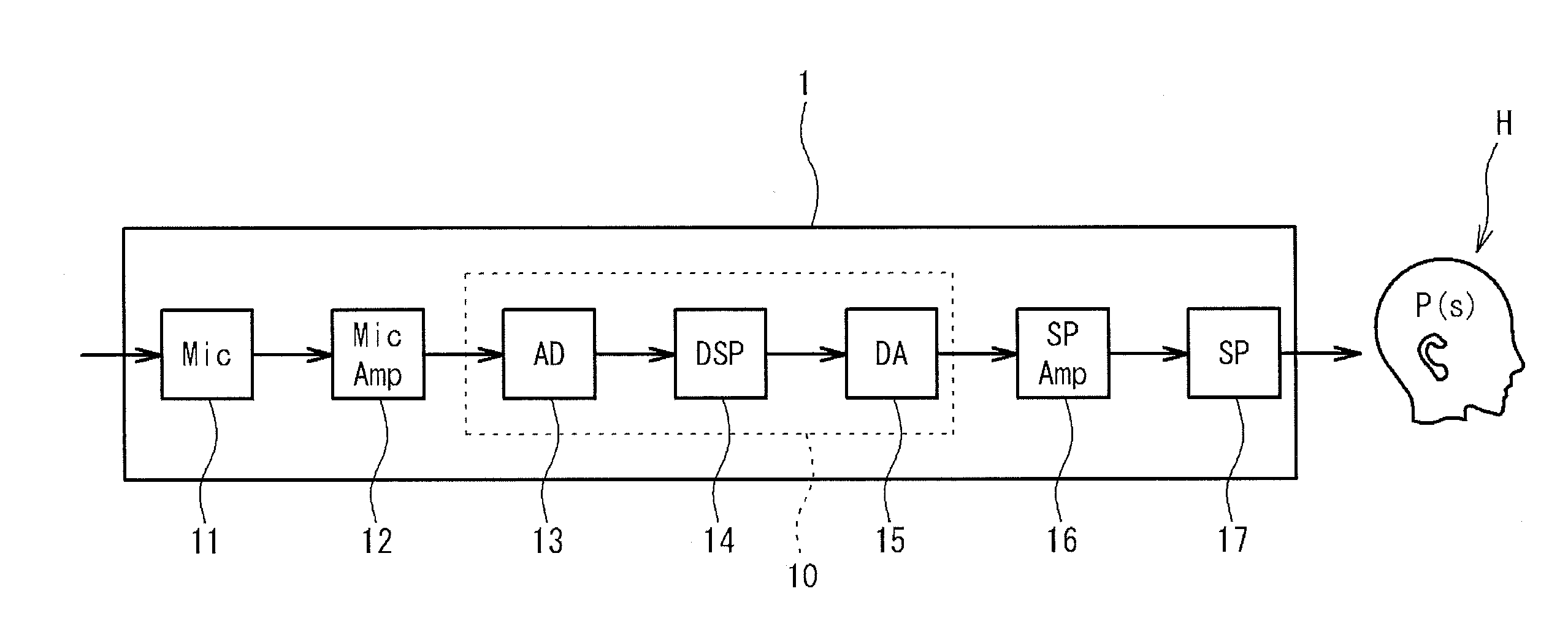Method for designing audio signal processing system for hearing aid, audio signal processing system for hearing aid, and hearing aid
a technology of audio signal processing and hearing aids, applied in the direction of hearing aid signal processing, hearing-aid sets, electrical appliances, etc., can solve problems such as trial and error, and achieve the effect of reducing errors
- Summary
- Abstract
- Description
- Claims
- Application Information
AI Technical Summary
Benefits of technology
Problems solved by technology
Method used
Image
Examples
Embodiment Construction
[0060]In the following, an embodiment of the present invention is described, referring to the accompanying drawings.
[1. Configuration of a Hearing Aid]
[0061]FIG. 1 shows a basic structure (hardware configuration) of a digital hearing aid 1 according to the present embodiment. The hearing aid 1 consists of a microphone 11, a microphone amplifier 12, an AD converter 13, a signal processing processor (Digital Signal Processor) 14, a DA converter 15, a speaker amplifier 16 and a speaker 17. Here, among the above described components, the AD converter 13, the signal processing processor 14 and the DA converter 15 constitute an audio signal processing system 10.
[0062]An analog audio signal inputted from the microphone 11 is amplified by the microphone amplifier 13, and thereafter is subjected to an AD conversion by the AD converter 13. An output from the AD converter 13 is subjected to a digital signal processing by the signal processing processor 14, and thereafter converted by the DA co...
PUM
 Login to view more
Login to view more Abstract
Description
Claims
Application Information
 Login to view more
Login to view more - R&D Engineer
- R&D Manager
- IP Professional
- Industry Leading Data Capabilities
- Powerful AI technology
- Patent DNA Extraction
Browse by: Latest US Patents, China's latest patents, Technical Efficacy Thesaurus, Application Domain, Technology Topic.
© 2024 PatSnap. All rights reserved.Legal|Privacy policy|Modern Slavery Act Transparency Statement|Sitemap



